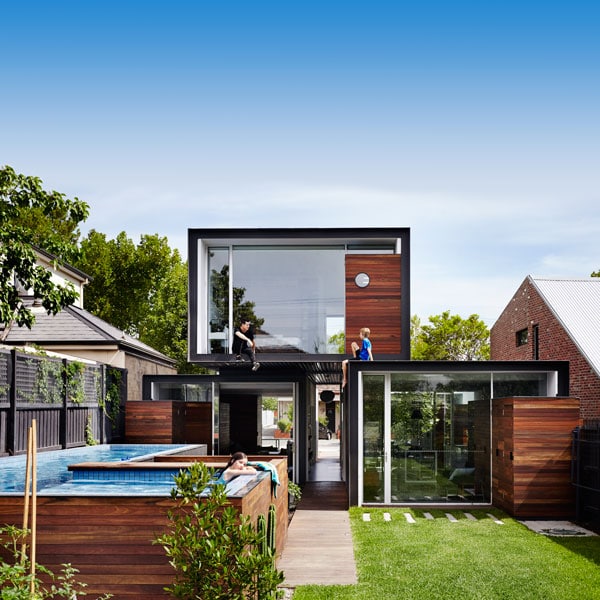Austin Maynard Architects (AMA) created THAT House to provide Australians with what they want—space and privacy—without the environmental burden of the country’s ever-popular mansion-sized homes. THAT House isn’t small by any means, but at 2,744 square feet, it’s still about half the size of those that surround it, designed for its residents to be “alone, together.” The modest sized home feels abundant in space thanks to its adaptable walls, which allow the homeowners to section off parts of rooms for more privacy or open them up for a different configuration.
The home isn’t short of green designs, either, as the facades were built to maximize solar gain, solar panels have been installed on the roof, passive ventilation reduces mechanical heating and cooling, and rainwater is captured and reused to flush toilets and water the garden. AMA describes the house as defiant in a neighborhood of poorly planned, large houses, however the sustainable aspects of the house are not limited to size. These green innovations help counter balance the effects of urban sprawl in Australia, while boasting a beautiful design, too.

PHOTO: TESS KELLY
Passive Ventilation /pas-iv ven-tə-ˈlā-shən/ (noun)
When convective airflows are used that result from the tendency of warm air to rise and cool air to sink to maintain climate.
Knowing that warm air rises making cool air sink, THAT House uses warm air created by large, north facing windows to circulate air from the top of the house to the bottom. Strategically placed plants provide shade for the house, too—cooling air and promoting further circulation.
Food Belt /ˈfüdˈbelt/ (noun)
An area of fertile land and abundant resources in Australia.
Until recently, most people lived within the Food Belt of Australia. However, contractors are now building in more arid places. This puts a huge strain on communities because the energy required to move water and other resources to more rural homes is so great. THAT House removes the need to move away from the Food Belt by exemplifying how elegant and spacious a smaller house can be.
Topographical Boundary /tuh-pog-ruh-fi-kəl bau̇ n-d(ə-)rē/ (noun)
Clearly marked boundaries on a map.
Due to Australia’s stable economy, aspirational culture, and relatively flat topography, Australians have spread their urban centers across topographical boundaries, moving so they can build bigger, more private houses. The space they need to do this is outside most settled areas and requires a lot of energy to reach. THAT house provides an alternative to crossing boundaries to build a house with privacy and space by maximizing space usage through brilliant design.

PHOTO: TESS KELLY
Download a PDF of this story here.

